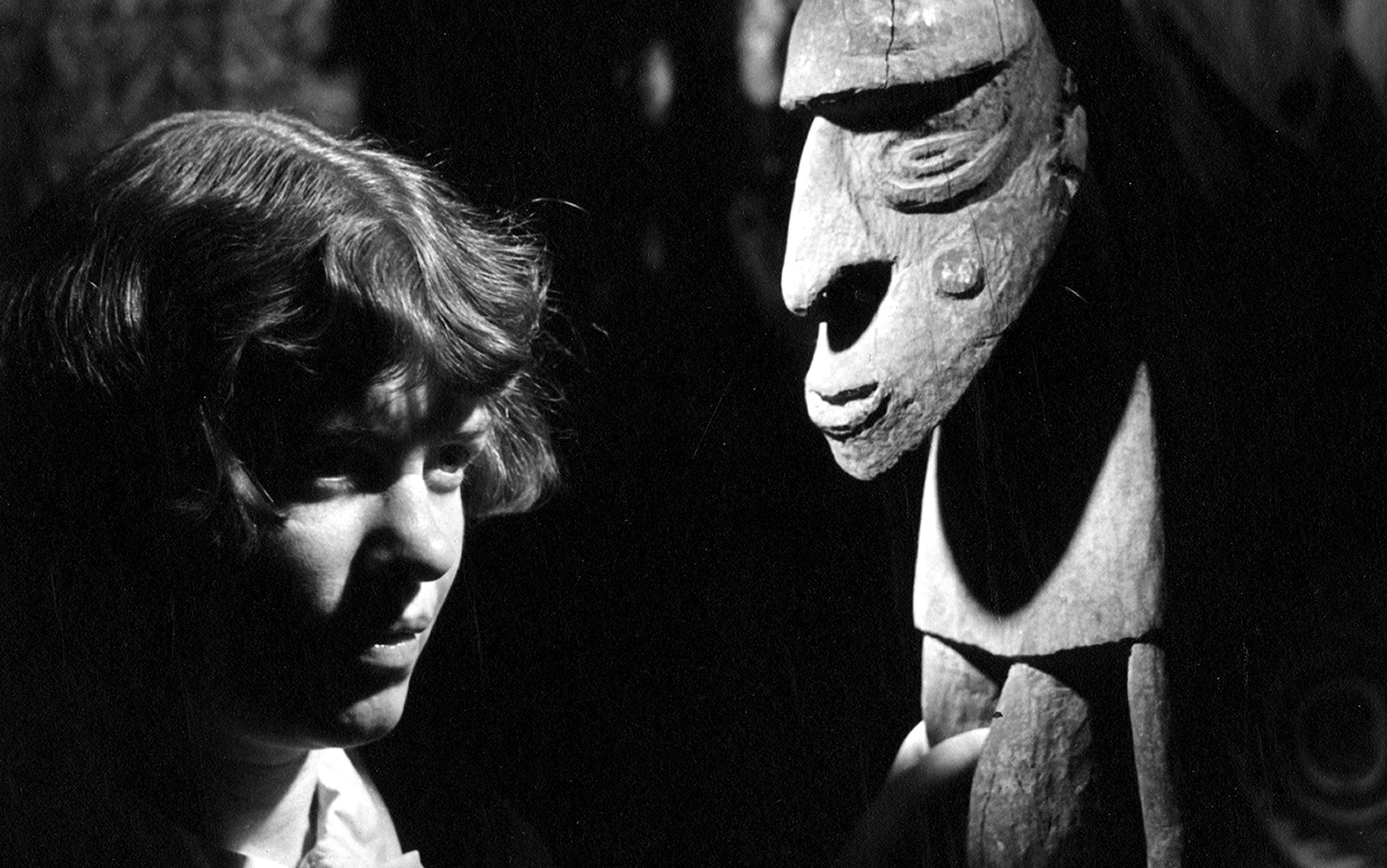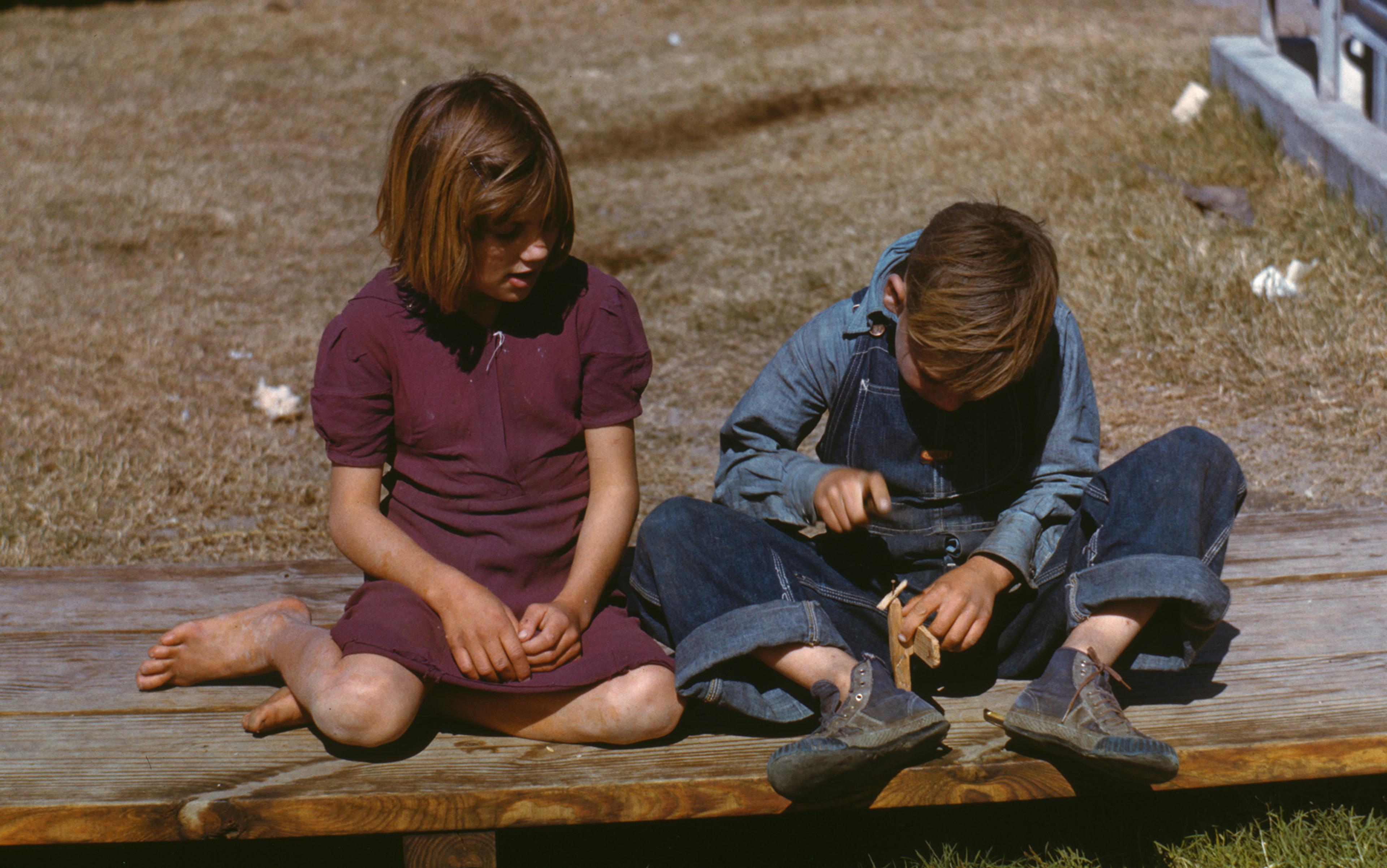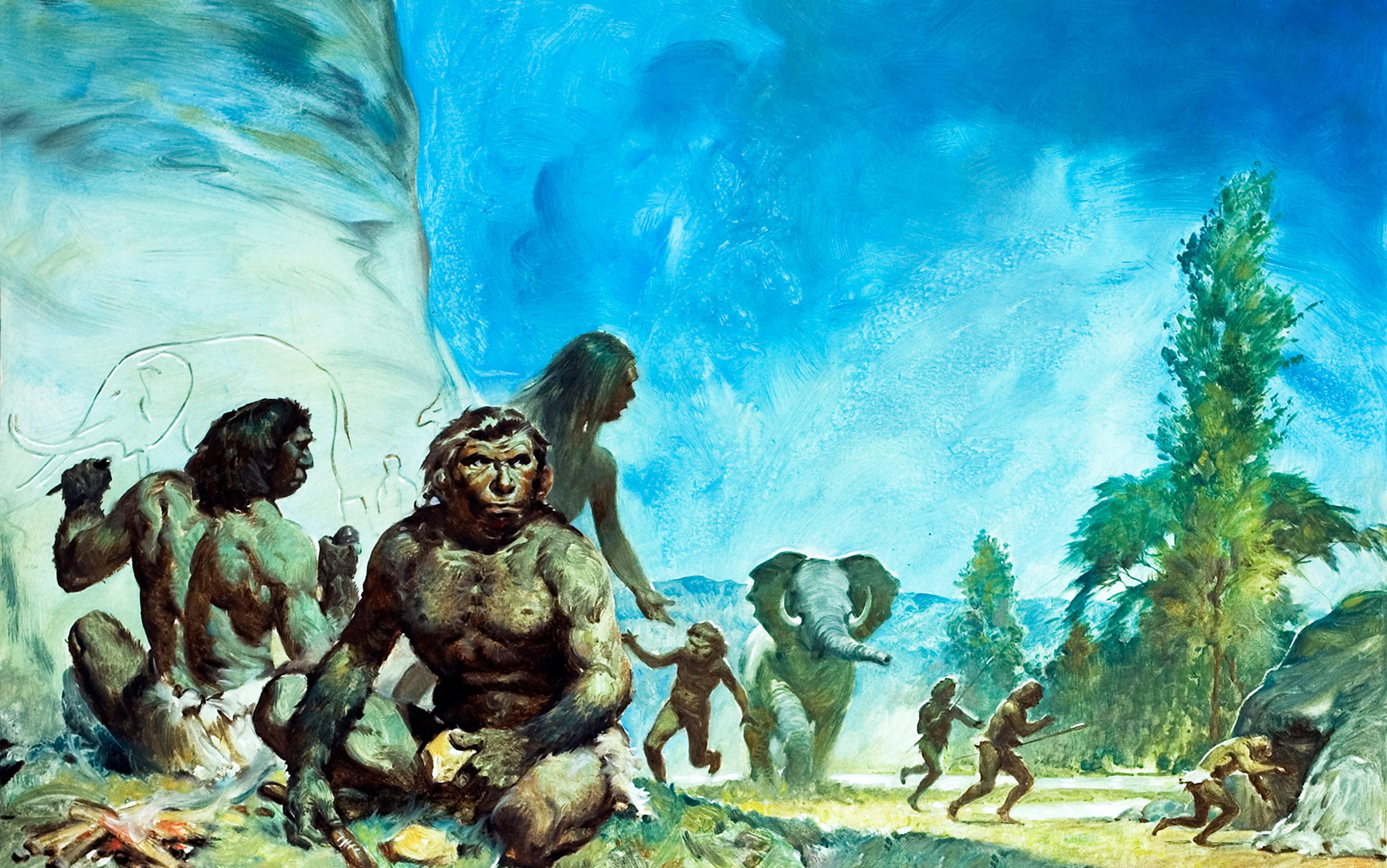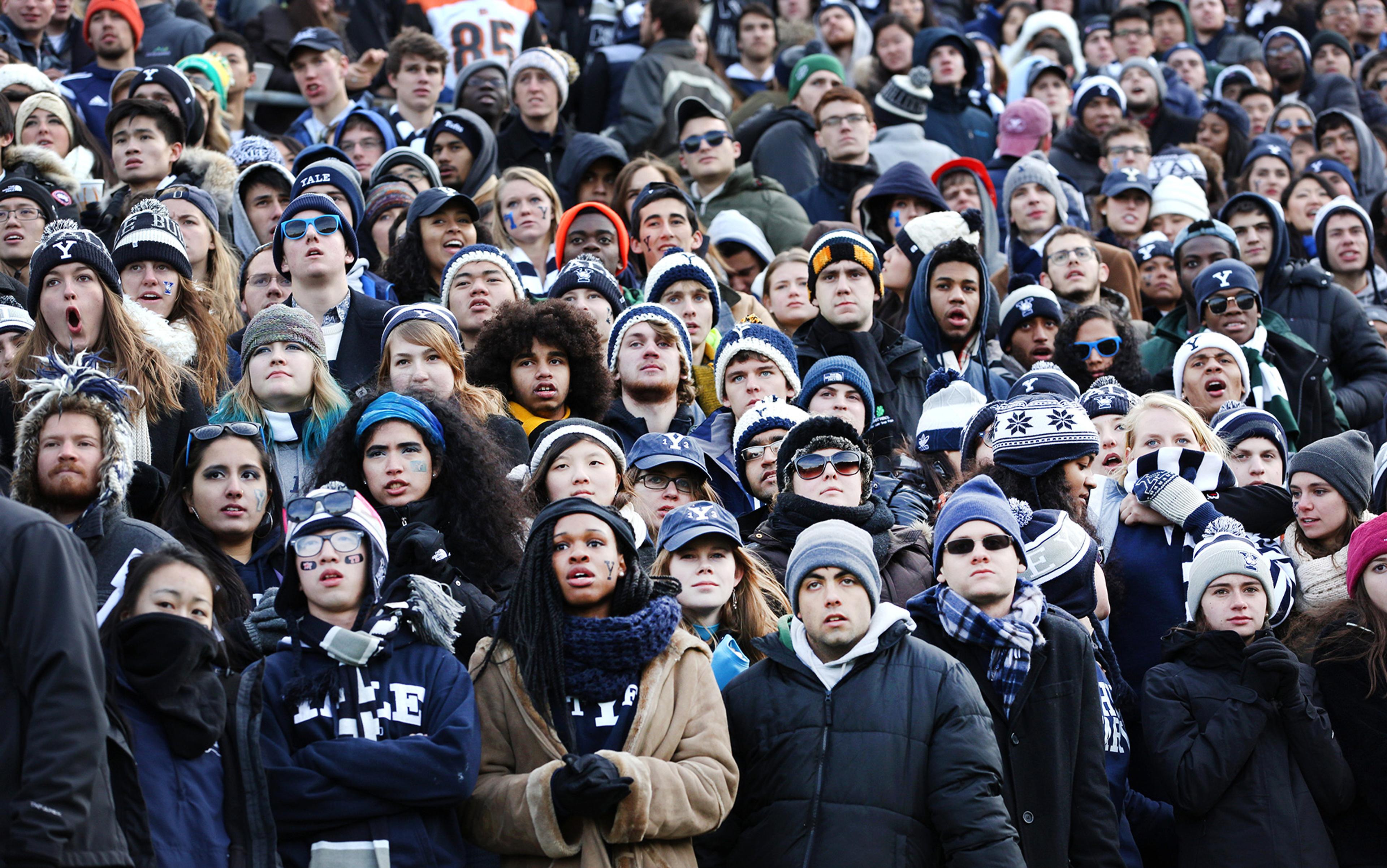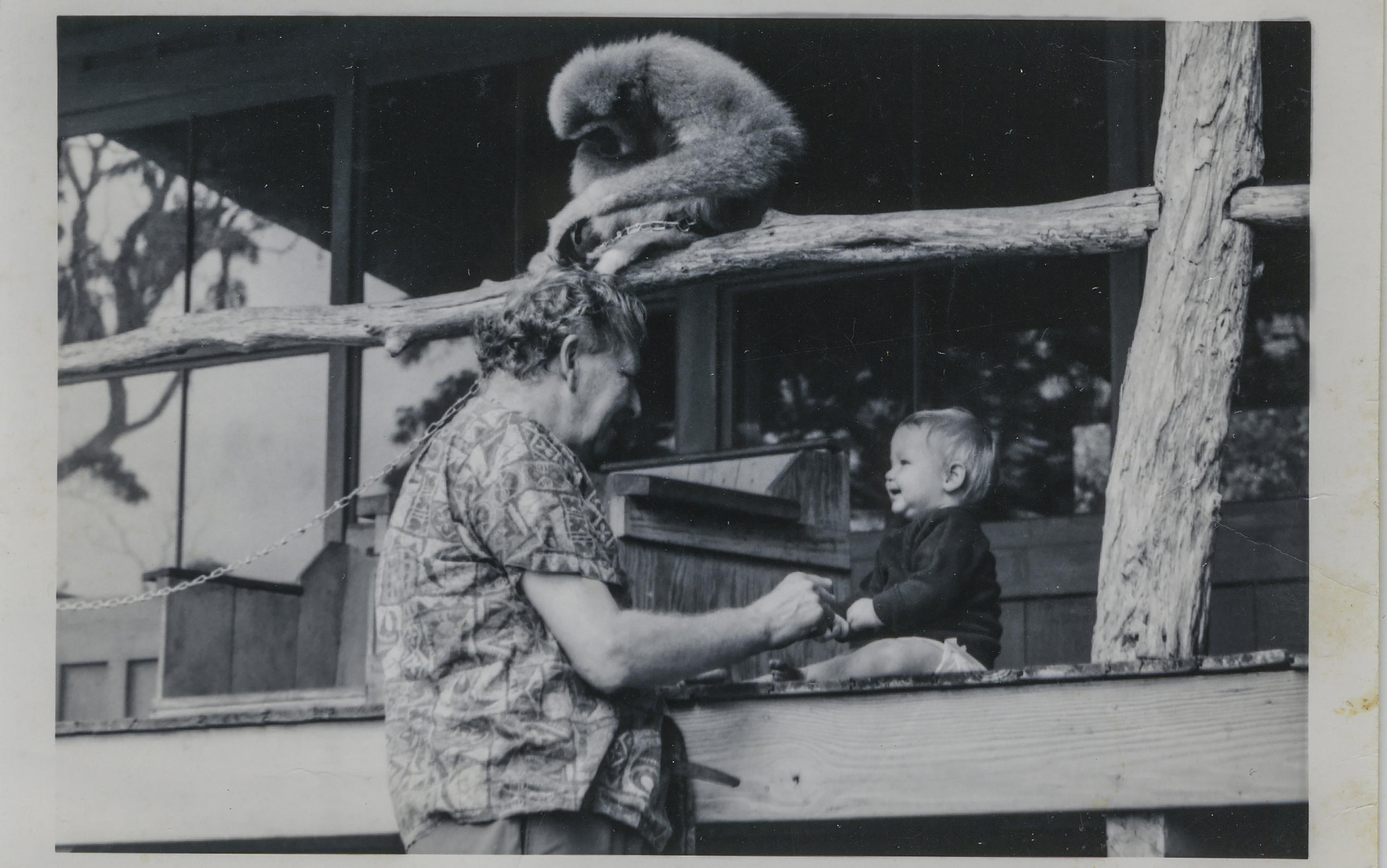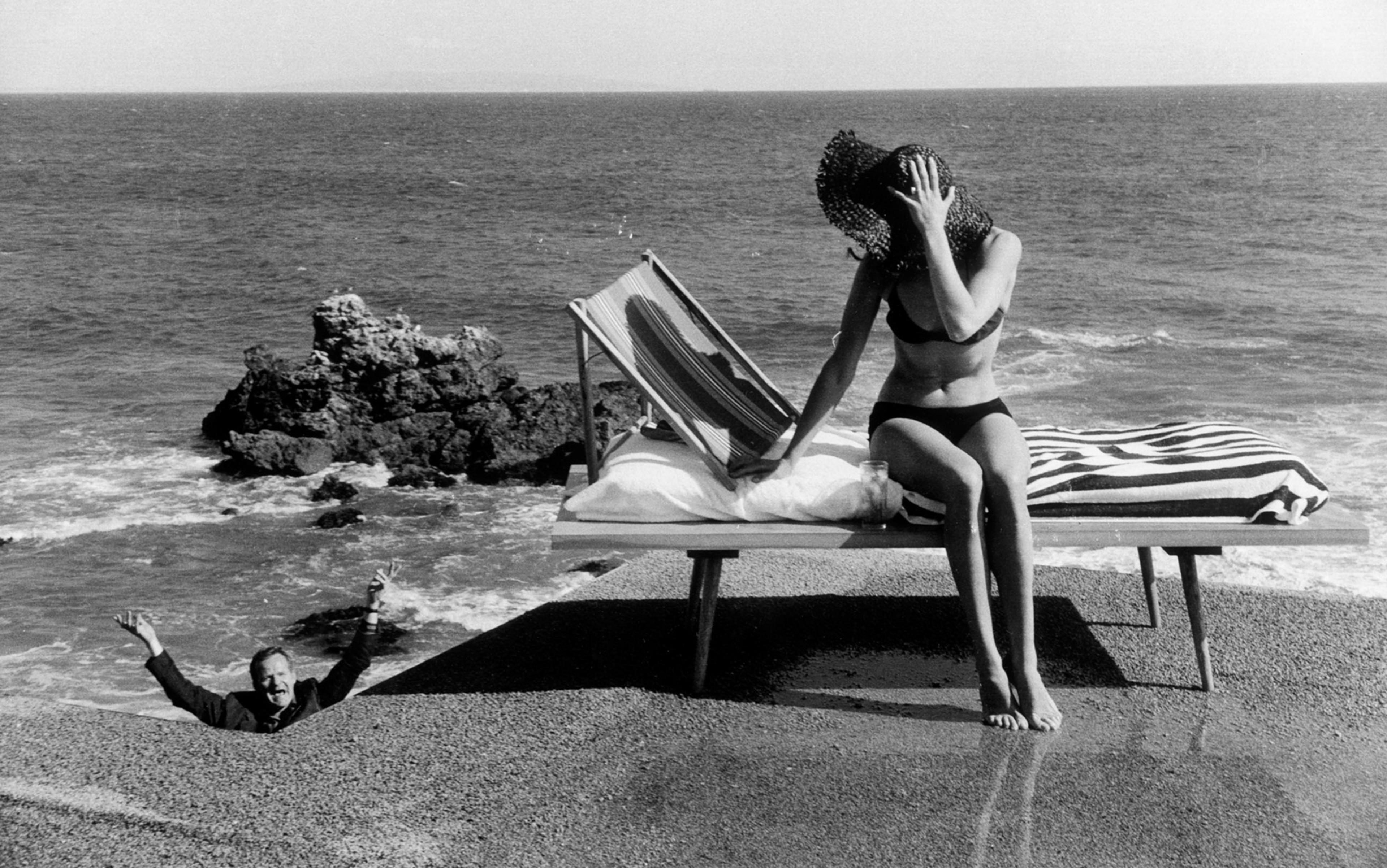In 1978, after 50 years at the pinnacle of American opinion, the anthropologist Margaret Mead died with a secure reputation and a lustrous legacy. Her ascent seemed to mirror the societal ascent of American women. In some two dozen books and countless articles, she gave a forceful voice to a sturdy if cautious liberalism: resolutely antiracist, pro-choice; open to ‘new ways of thinking’ yet wary of premarital sex and hesitant about the Pill. The tensions in public opinion were hers, too. In her obituary, The New York Times called her ‘a national oracle’.
But posthumous reputation is a brittle thing. It’s difficult to defend oneself after death, and the years wear away a name, eventually reducing it to dust or mere ‘influence’. Issues change, standards shift, new thinkers rise: few names last forever. Within anthropology, Mead is still revered, but mostly as a way to understand the discipline’s origins. In the popular mind, Mead’s name has all but vanished, her reputation whittled down to an apocryphal quote found on coffee mugs and dorm-room posters: ‘Never doubt that a small group of thoughtful, committed citizens can change the world; indeed, it’s the only thing that ever has.’
What’s more, Mead has become a target of vitriolic dislike for a particular kind of cultural conservatism. In 1999, the Intercollegiate Studies Institute, a group that promotes conservatism in colleges, ranked Mead’s Coming of Age in Samoa (1928) as the single worst nonfiction book of the 20th century. In his Letters to a Young Conservative (2002), the splenetic pseudo-thinker Dinesh D’Souza accused Mead, as many others have done, of wounding ‘Western culture’ by introducing some kind of noxious, destabilising relativism. And in The Closing of the American Mind (1987), the philosopher Allan Bloom trashed Mead as a ‘sexual adventurer’.
What happened? More than the passage of time dispatching her name into the history books, Mead had an enemy who attacked with uncommon hatred: Derek Freeman, a New Zealand anthropologist who made it his life’s work to expunge Mead after her death. His criticisms have stuck. Like a parasite, his own name has lived on as ‘Mead’s critic’ (he died in 2001), leading to a strange alchemy: to the extent that Mead is remembered now, it is most often as one who was proven wrong. Freeman gave her opponents a readymade cudgel to bludgeon not only her anthropological work but everything she represented beyond that. And what, indeed, was that?
The explosively curious and acerbic Margaret Mead was born in 1901 and brought up by a tough academic family in Pennsylvania. After a childhood dotted with melancholy, her purpose in life – anthropology – emerged in her undergraduate years at Barnard College in New York City. As a graduate student at Columbia University in the 1920s, she fell under the sway of Franz Boas. The moustachioed polymath was born in Germany and defined American anthropology. It was his programme, his school of thought, that cleaved off anthropology from nearby disciplines, setting out what anthropologists do, and why. Like Émile Durkheim in sociology or Sigmund Freud in psychoanalysis, Boas fathered a discipline.
Boas’s seminal essay ‘The Study of Geography’ (1887) distinguished between the two poles of the ‘physical’ and the ‘historical’ method (‘geography’ here being akin to what we call anthropology). The physical method searches for facts from which general laws can be deduced. Facts themselves are interesting only insofar as they can be roped together to form unbreakable laws, which set the contours of what is possible and yield testable predictions. The historical method, meanwhile, finds the facts of the world to be interesting in and of themselves – there’s no need to get caught up trying to derive ironclad generalisations from them.
At the end of the 19th century and into the early 20th, racialist biology ruled the human sciences. Differences between societies were ascribed to differences in the essential biological makeup of their members, that is, to race. In order to explain why certain peoples were more ‘primitive’ than others, the anthropologist figured out which races have attained what kind of sophistication, and then pegged them, permanently, to that rung. Race scientists believed that laws – thought of as biological – governing the behaviour of humankind could be deduced from the particular facts of each individual’s racial characteristics. A natural political consequence of such a view is, of course, eugenics. The link with Boas’s ‘physical method’ is clear.
Boas was one of history’s great antiracists. (He remains something of a bugbear for white supremacists: Jared Taylor, the mush-headed editor of American Renaissance magazine, placed Boas on a list of ‘Americans Who Have Damaged White Interests’.) Boas’s antipathy towards racist thinking was the result of a moral conviction that humankind is broadly equal, buttressed by his extensive ethnographical research of American Indians. But what could replace race as an explanation of the differences between human societies? Here was set the cornerstone of US anthropology: Boas replaced race with culture.
If culture is contingent and variable, then human ‘nature’ is malleable. It could be changed – for the better
Before Boas, ‘culture’ was more or less understood to be a people’s creative output: the arts, the sciences – engagement with these made one ‘cultured’, refined. Culture is the 11th-century Japanese classic The Tale of Genji, culture is multilingualism, culture is a curiosity in humankind’s explorations. This is not what Boas meant.
After about 1911, Boas spoke of ‘cultures’ – plural – rarely just ‘culture’. For him, a culture was the set of learned behaviours that governs a group of people (‘patterns’ in the phrase of his brilliant student Ruth Benedict, a great love of Mead’s). Rather than differing in the kind of being they were, as racialist science held, people instead differed in their ‘repetition of mental processes’. Culture was custom. Learned behaviour and patterns of thinking, taught to children by means of folklore, instruction and their own imitation of adults, becomes a lens through which one experiences and affects the world. It is also, crucially, the reference point through which all behaviour is rationalised. This is a culture, and there are uncountable cultures that mould the ways that people act out their lives. Boas never jettisoned biology entirely: he simply made culture far more influential. This view of humanity came to be known as cultural determinism, and it had important political implications: if culture is contingent and variable, then human ‘nature’ is malleable. It could be changed – for the better. For progressives who embraced cultural determinism, this meant that poverty, crime and racial inequality were outcomes of economic disadvantage, not innate differences. There was nothing inevitable about them.
Culture, so understood, was anthropology’s new object of study. For Boas and his followers, it was imperative to investigate humans’ infinite constellations of culture, of custom, of traditional, habitual behaviour (a story recently told to acclaim by Charles King in his book Gods of the Upper Air [2019]). This idea launched a thousand anthropologists towards the ends of the earth. They exited the seminar room to enter the field, to learn of the ways we humans can – and do – comport ourselves. Others of us must be met, and known, languages learned, customs understood: if humankind is to study itself, we must treasure and investigate the rich variety of ways of being – ‘every phenomenon, every fact, itself is the really interesting object’, as Boas put it, quoting Goethe. That is, we must do ethnography. So that is what Mead set out to do.
In the summer of 1925, a year after obtaining her master’s degree, Mead embarked on her first professional fieldwork, under Boas’s supervision, on the island of Ta‘ū, in American Samoa. Planning to stay for nine months, she left a farewell letter for her husband, the American archaeologist Luther Cressman, which included the immortal line: ‘I’ll not leave you unless I find someone I love more’ (she always spoke her mind – and did indeed shortly leave him). On Ta‘ū, she learned the Samoan language, endeared herself to the locals, and recorded vast amounts of ethnographic data. Her living quarters, a US naval dispensary, was a poor choice because it separated her from the Samoans. Nevertheless, by the end of her stay, the village of Fitiuta honoured Mead ceremonially, which, she noted with a dash of arrogance, ‘gave [her] rank to burn and [allowed her to] order the whole village about’. It was a mark of acceptance after nearly a year of ethnographic research.
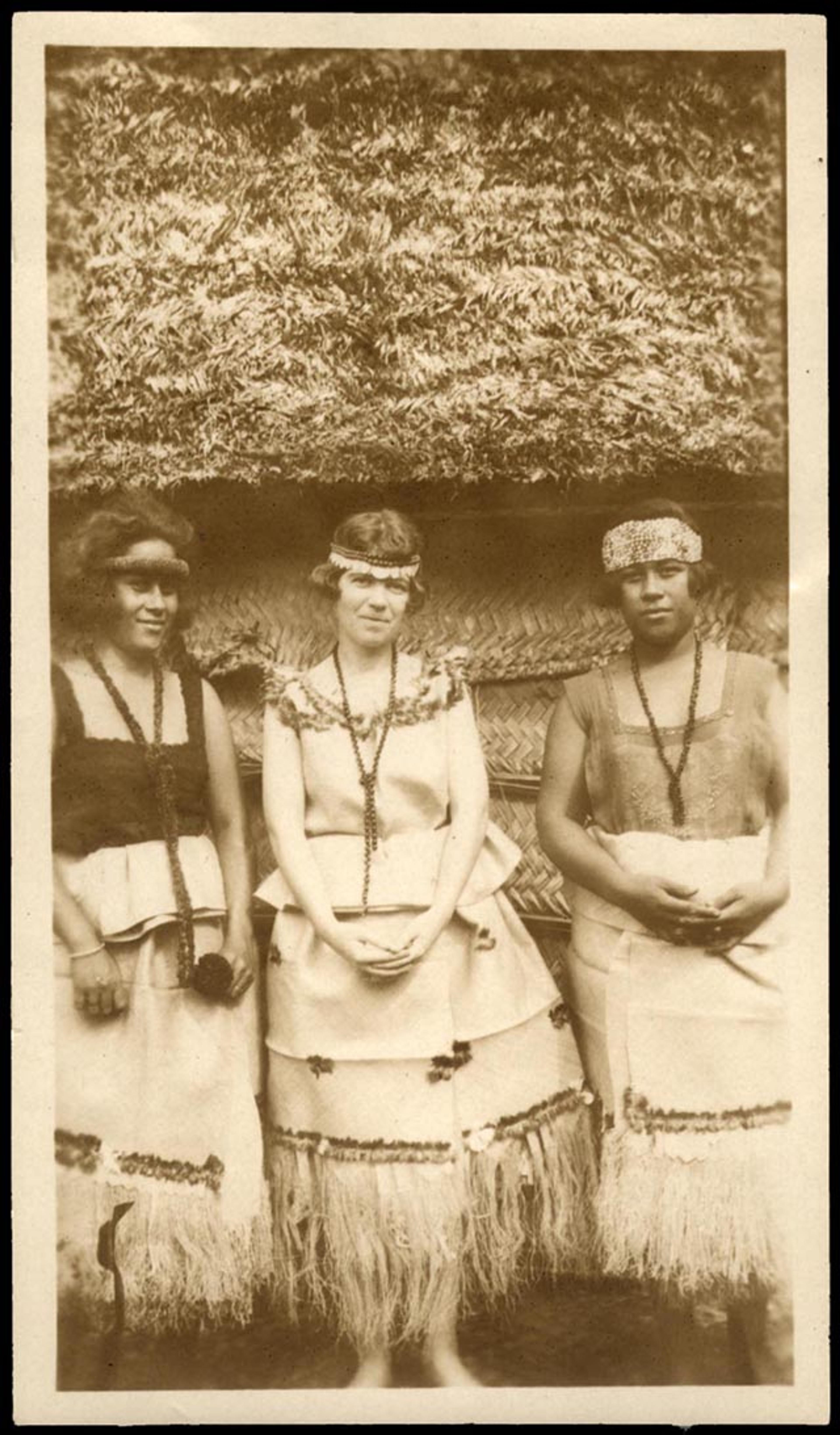
Margaret Mead standing between two Samoan girls, c1926. Gelatin silver print. Courtesy the Library of Congress
Part of the Boasian project was to break down what seemed to be universal laws of humanity. Finding ‘negative instances’ of phenomena that were perceived to hold for all people everywhere would support cultural determinism because it would show that culture, not biology, was responsible for our differences.
G Stanley Hall, the American psychologist and educator, had made the study of adolescence a topic of serious enquiry. He subscribed to a form of biological determinism that he followed to its eugenic endpoint (he was a member of the American Eugenic Research Organization, and a passionate anti-Semite). One of his many widely accepted ideas was that adolescence is, by biological necessity, a time of Sturm und Drang – German for ‘storm and stress’ (we keep a kernel of this idea in the too-oft-used phrase ‘raging hormones’). To put it unscientifically, adolescence is the pits. Hall held that this was true for everyone, everywhere, in all times. The very biology that makes us human also makes adolescence hell.
Mead’s study of the Samoans scrutinised this biological universalism by focusing on teenage girls. ‘Because I was a woman and could hope for greater intimacy in working with girls rather than with boys,’ she wrote, ‘and because owing to a paucity of woman ethnologists our knowledge of primitive girls is far slighter than our knowledge of boys, I chose to concentrate upon the adolescent girl in Samoa.’ Her ultimate, propulsive question was meant to be specific enough to be amenable to ethnographic study yet grand enough to say something truly important: ‘Are the disturbances which vex our adolescents due to the nature of adolescence itself or to the civilisation?’ If Samoan girls experienced adolescence without the punishing stressors that US society seemed to inflict on its young, then that would constitute a ‘negative instance’, and another brick could be added to the Boasian edifice. It would also, Mead was well aware, hold some pertinent lessons for how Americans should raise their own young. They could do better, and Mead would show them how.
Like the Samoan attitude to birth, death and disease, sex was not cordoned off
Sure enough, two years after Mead returned to New York, Coming of Age in Samoa was published, and would become one of the most famous anthropological books ever. She was 27. Mead argued that Samoan girls, unlike Americans, were able to navigate adolescence easily. One distinction was the involvement of the community in raising children, particularly the extended family. This implies ‘an enormous diffusion of authority’ and disrupts the pain of rebellion against parents.
Another distinction: openness. Giving birth, for instance, was not sequestered away. ‘[The children] had watched miscarriage and peeked under the arms of the old women who were washing and commenting upon the undeveloped foetus.’ Death, too, was unshrouded: ‘[T]here was no desire to protect them from shock or keep them in ignorance.’ This acceptance of the grim, squalid underbelly of life might have actually freed Samoans of a certain stressful fear of the unknown.
But the part of Coming of Age that received the greatest attention by far was Mead’s description of the Samoan attitude towards sex (though it has a rather modest role in the book itself). Like the Samoan attitude to birth, death and disease, sex was not cordoned off. For boys, masturbation was a cheery activity for a day out in the sunshine with one’s friends, away from adult supervision. For girls, it seems to have been more solitary, but in no way suppressed. According to Mead, homosexual sex was casually accepted and seen as a kind of play. Perhaps most shocking for Americans in the 1920s was the Samoan embrace of surreptitious, premarital sex between adolescents: ‘[S]ex is a natural, pleasurable thing; the freedom with which it may be indulged in is limited by just one consideration, social status.’
The book’s final two chapters veer away from disinterested ethnography into a stinging critique of contemporary US culture. One is reminded here that Coming of Age is above all a popular, not academic, book. There are no footnotes and there is no bibliography. It is long on speculation. It is generous in its interpretations. But it is, above all, a means of cultural translation, of bringing to the minds of Americans the ways that other peoples live – so that they could reflect on their own forms of life. It was always meant to affect the thinking of normal, literate Americans – not ‘Boasians’. And by the end of the book, she let ’em have it.
US culture is repressing, stultifying, filled with dreary expectations and exacting, arbitrary codes that often pull against one another, creating a maelstrom of confusion and demand: ‘[O]ur children are faced with half a dozen standards of morality: a double sex standard for men and women … groups which advocate that the single standard should be freedom, while others argue that the single standard should be absolute monogamy … [T]he list of possible enthusiasms, of suggested allegiances, incompatible with one another, becomes appalling.’ The Samoans, for whom adolescence is a placid time, approach life with a casualness from which Americans could learn much.
The book was a fantastic commercial success. ‘Samoa Is The Place For Women’, shouted The New York Sun in 1929; ‘Where Neuroses Cease From Troubling And Complexes Are At Rest’, as the World awkwardly glossed the islands. Published the same year that D H Lawrence’s novel Lady Chatterley’s Lover first came out, Mead’s book caught the tide of changing sexual mores in the US. It was a time of the first churn of sexual revolution – accompanied by preemptive reaction and stiffening conservatism. Americans – particularly fretting parents of rebellious teens – searched for ways to navigate these new, chaotic waters. Mead’s book, unhindered and direct, was irresistible. The Honolulu Star-Bulletin informed its readers that Mead had sought to discover ‘the flapper in her primitive state’.
Nonetheless, the book was blasted by certain of Mead’s fellow anthropologists. Edward Sapir, a jilted lover of Mead’s, called it ‘cheap and dull’ (and her a ‘loathsome bitch’ – surely unrelated assessments). The anthropologist Bronisław Malinowski and his followers assailed its generalisations and overextended social commentary. More recently, Mead has been condemned for painting an idealised picture that stereotypes South Pacific Islanders as living in a kind of primitive, erotic utopia, a Garden of Eden with plentiful boning. Samoans themselves have taken umbrage at this interpretation, and have quite rightly wondered why Mead should speak for them (though Mead was clear that the book was just her own, personal interpretation).
‘When field data are so good that they can be used retrospectively,’ Mead wrote in the late 1940s, ‘especially by other investigators, it is a genuine tribute to the thoroughness of the field-work.’ Yet Mead had a penchant for sketching out a ‘typical day-in-the-life’, which smoothed out the messiness of her actual observations. She herself called Coming of Age ‘literary’ by contrast with her second book, The Social Organization of Manu’a (1930), a dry academic tome brimming with data and mere facts. Social Organization is the book written for specialists; Coming of Age is for thoughtful lay readers. Or, put another way, the former is about Samoa, while the latter is more about the US.
Her acceptance of cultural determinism gave her the impetus to become a social reformer and cultural critic
In the 50 years remaining of her life, in addition to pursuing anthropological research, Mead became the voice of liberalism in the US. Her monthly columns in Redbook, the middlebrow magazine for women, accrued millions of readers. She made appearances on Johnny Carson’s TV show, wrote books – some lay, some academic, most good. She declined US president Lyndon B Johnson’s offer to become the secretary of health, education and welfare, though she did advise him on women’s issues, and was among the first to warn of anthropogenic climate change. Her letters to president Carter began with the coolly familiar ‘Dear Jimmy…’
As with Albert Einstein and physics, or Babe Ruth and baseball, Margaret Mead was anthropology. She far surpassed Boas’s public reputation. In the late 1960s, at the height of the sexual revolution, Coming of Age sold more than 100,000 copies. Her pioneering use of radio, her trade books that drew on far-flung cultures from Samoa to England, her grounded defence and unbridled celebration of the diversity of human customs – all of it made her the quintessential social scientist and a venerable public intellectual. (‘I’m exhausted,’ Mead once said to a staffer. ‘Find me a lecture to deliver.’)
In her monthly question-and-answer section in Redbook, she opined on everything from drug laws (they should be loosened, we should invest more in rehabilitation) to grandparents (they should live near their grandchildren) to premarital cohabitation (iffy). Throughout her career as a cultural commentator, she sometimes went against the liberal grain but she was always cognizant of the fact that mores shift, that the foundations of society are not permanent, that cultures are patterns imperfectly replicated generation by generation.
Her acceptance of cultural determinism gave her, at least in part, the impetus to become a social reformer and cultural critic. A normative quality is baked into the very stuff of cultural determinism. If a culture is learned behaviour, a manner of organisation, and if we could study how other cultures organise themselves, then there is the strong implication that one’s own culture could be reformed for the better. It is malleable – unlike the racist and sexist determinism of Mead’s forebears. And if it is indeed malleable, who is not going to try to change it for the better?
Mead’s death in 1978 also marked the zenith of her reputation. For found among her papers was a manuscript that would soon contort and blemish her name – Derek Freeman’s provisionally titled ‘On Coming of Age in Samoa: The Nemesis of an Anthropological Myth’. He had sent it to Mead in the hopes that she would read it, but she never did. Had she, the book would have sparked in her an immeasurable rage.
Much of what one needs to know about Freeman is that he happily referred to himself as a heretic. In his mind, intellectual opinion had coalesced around the Boasian belief that culture makes us human, that biology is relatively unimportant. Cultural determinism was victorious, an unthinking dogma, unscientific to the core. In himself, Freeman bravely found a ray of hope for defeating it.
In the late 1930s, Freeman had developed an interest in anthropology as a graduate student at Victoria University College in Wellington. He attended seminars taught by the New Zealand psychologist Ernest Beaglehole, a Boasian who introduced him to Mead’s work, which in turn prompted a lifelong fondness for Samoa. In 1939, Freeman won an appointment as a teacher to the Education Department of Western Samoa, and he arrived the next year. He planned to teach and in his free time conduct fieldwork. As on Mead’s first journey, he was 23 years old. Among the books he brought were Boas’s General Anthropology (1938) and a nifty little volume for the public, called Coming of Age in Samoa.
Like Mead, Freeman earned an honorary Samoan title and, though he spent more time among the Samoans, he too often lived with Europeans and New Zealanders. He mastered the language. Then the Second World War interrupted his work, and various academic assignments, as well as a breakdown in his mental health in 1961, kept him from returning to Samoa until the mid-1960s. In the interlude, he kept up his knowledge of Samoan and often lectured on Samoan culture, but published little. His views also shifted dramatically. With a convert’s zeal, he desired to make anthropology into a science. For that to happen, according to Freeman, anthropology would have to return to its pre-Boasian roots: ‘[T]he science of man must be biologically based – we must begin with the human animal, and never let him slip from our sight when studying social systems …’ What stood in the way of this ambition was Coming of Age – by then, a 40-year-old book with broad public appeal but little academic standing. Even Mead considered it something of the past. Freeman was determined to destroy it.
Freeman’s book on Mead was dedicated to Karl Popper, the Austrian philosopher to whom we owe the idea of falsifiability: a scientific theory is scientific only if it is possible to prove wrong. On 23 March 1973, Freeman wrote his first letter to Popper, announcing abruptly that ‘for me you are beyond all compare the philosopher of the 20th century’. So begins a correspondence of surpassing strangeness and unintended hilarity. Freeman frames his project as one of epitomising Popper’s philosophy, ‘an exemplification within anthropology of the scientific methods in which you have so long instructed us’. Popper, for his part, appeared complimented but bemused. It doesn’t seem like he had a clue about Coming of Age, and he knew even less about US anthropology. His letters mostly offer bland encouragements.
In 1981, when Freeman finished writing Margaret Mead and Samoa: The Making and Unmaking of an Anthropological Myth (1983), he wrote to Popper: ‘I have produced a book that will have a radical effect on the thinking of both anthropologists and biologists, and find a permanent place in the history of the nascent science of anthropology.’ There are not many anthropologists who agree – the American Anthropological Association deemed Freeman’s book ‘poorly written, unscientific, irresponsible and misleading’ – but, as with the great success of Mead’s popular book, the public would take a very different view.
He wrote with venom and never admitted a single scholarly error in connection to his feud with her legacy
‘New Samoa Book Challenges Margaret Mead’s Conclusions’, ran a front-page headline in The New York Times a couple of months before the book’s publication. Freeman noted in his private diary: ‘Now the matchless deed’s achieved: determined, dared, and done’ (always nice to write one’s own reviews). More publicity followed. The Washington Post, Time magazine, The Wall Street Journal and the Smithsonian magazine all ran with it. Freeman was invited on to The Phil Donahue Show to debate Mead’s daughter Mary Catherine Bateson and the anthropologist Bradd Shore (‘You do cut a bit of a messianic personality,’ the host told Freeman: a common observation). Anthropologists, most of whom had not read Freeman’s book, were asked for instant reactions, which could not satisfactorily be delivered. Given the coverage, it seemed to the public that Freeman had conclusively corrected Mead. He wrote with venom and never admitted a single scholarly error in connection to his feud with her legacy.
In 1998, Freeman launched a second volley in which he hoped to reveal Mead’s limitations, but instead vividly demonstrated his own. In The Fateful Hoaxing of Margaret Mead: A Historical Analysis of her Samoan Research, he alleges that the young Mead, alone in Ta‘ū, was so incompetent that she based all of her knowledge of adolescent sexuality on a hoax. In Freeman’s telling, two of Mead’s companions, Fa’apua’a and Fofoa, told her a joke. It’s not even a funny joke: they told her that as teenagers they went out at night, after the adults had fallen asleep, and had sex with boys. Freeman argues that this joke launched Mead’s book, that off this single jest she constructed an elaborately disingenuous paean to sexual freedom.
‘We are here dealing with one of the most spectacular events of the intellectual history of the 20th century,’ he wrote. ‘Margaret Mead, as we know, was grossly hoaxed by her Samoan informants, and Mead in her turn, by convincing others of the “genuineness” of her account of Samoa, completely misinformed and misled virtually the entire anthropological establishment … Never can giggly fibs have had such far-reaching consequences in the groves of Academe.’
The American anthropologist Paul Shankman, the foremost authority on the Mead/Freeman controversy, has proven the hoaxing argument to be quite wrong. Freeman had interviewed Fa’apua’a several times (through an intermediary), in the late 1980s and early ’90s, enquiring about her relationship with Mead some 60 years earlier. As Freeman tells it, in an appropriately dramatic moment Fa’apua’a ‘suddenly realised that Mead’s faulty account [of Samoan sexual conduct] must have originated in the prank that she and her friend Fofoa had played on her’.
But the complete transcripts of the interviews, which Freeman donated to the University of California San Diego, tell a very different story: Fa’apua’a was frequently confused, her answers are prompted, and she knew nothing about what Mead had done since 1926 other than what Freeman told her – which was intended to be as derogatory and provocative as possible (he said, for instance, that Mead wrote that Fa’apua’a ‘went out at night, all night, every night’, which is a lie). Less than one page of 140 ever made it into public view. In fact, the argument is so outrageously wrong that Westview Press, which first published The Fateful Hoaxing of Margaret Mead, should issue a retraction.
Far from being a key informant, Mead mentions Fa’apua’a only a couple times (under a pseudonym) in Coming of Age, and names her and Fofoa only as ‘merry friends’. At no point does Mead refer to the so-called joke Fa’apua’a supposedly told, and she was well aware of the Samoan proclivity to make fun with foreigners. To accept the hoaxing argument, Mead’s data, including those of Social Organization, would also need to be gratuitously thrown out the window.
Freeman’s Samoa is an almost comically inverted version of Mead’s. The Samoans are not casually open. They’re rigid, thin-skinned, cutthroat competitors, and rape is common. If Mead conjured Arcadia, Freeman sought Hades – ‘the darker side’, he wrote. Since Mead’s whole picture of Samoa was wide of the mark, Freeman reasoned, her conclusions about adolescence must be too: ‘In Samoan character … outer affability and respectfulness mask an inner susceptibility to choler and violence.’ For a man who claimed to love Samoa wholeheartedly, and who pledged to be buried there, it’s a remarkable depiction. And while Mead’s Samoa presents a placid (indeed, almost stereotypical) island life, with relaxed morals and little conflict, Freeman finds a puritanically Christian Samoa that prizes the sanctity of virginity above all else.
There are plausible reasons for this. Freeman did not go to Samoa in order to study adolescence. His informants were not female, and they were not young. They were fellow men who were keen to present a stricter and more male-dominated culture than the young women Mead had known. Publicly approved virtue espoused by leaders does not always match up with the privately pursued behaviour of those whom they lead. And much had changed in Samoa too, not least due to the stationing of thousands of US Marines during the war, some of whom met and married Samoan women. Culture is, after all, dynamic.
The question is why, if Freeman considered himself to be doing serious anthropology, did he focus on an out-of-date book for the lay reader and not on Mead’s Social Organization of Manu’a (which he knew, but downplayed)? The answer is that he was not interested in confining the fight to academia; he, like Mead, wanted to say something about modernity and the West, and was prepared to use the Samoans to do it.
His argument was inelegant but effective. By casting Coming of Age as foundational to the cultural determinist paradigm, Freeman could dress up as the dragon-slayer he wasn’t. Freeman thought he knew why Mead produced such a different view of Samoa: she was blindly in thrall to Boas. Her desire to vindicate Boas’s theories in the South Pacific was so intense that she noticed only what was conducive to her preconceptions of the place. Boas needed Mead to prove cultural determinism, she needed to prove herself to him, and so she – and, by extension, Boas – failed. It is a devilish little argument, rank with sexism, while also drawing down the whole of Boasian anthropology to a strangely childish register, as if all their anthropological achievements could be reduced to some kind of pop-Freudianism. In that regard, Freeman should have looked in the mirror: ‘Mead,’ he once wrote, ‘was known as a castrator; she went for men and put them down.’
The takedown of cultural determinism clears the way to revive biological explanations of human difference
On the beaches of Samoa, two anthropologists sought evidence for two different theories of how humans are and, by consequence, how they should be. Their ethnographic observations, made through tinted lenses, bolstered grand ideas that had implications far beyond their narrow academic scope. Mead went explicitly in search of ‘negative instances’ to the biological essentialism of the reigning anthropology of her day; Freeman in turn looked for ‘negative instances’ of Mead’s theories, explicitly seeking to uphold a more biologically centred discipline. They were, in this instance and from the long view of history, avatars of ‘culture’ and ‘biology’, and their clash exemplifies the immemorial tension that those two ideas have had in the minds of people trying to understand what it means to be a person.
How one resolves that tension has a significant effect on one’s politics. It is not determinative, but it is telling. The culture-first – Boasian – view is that human nature is ambiguous and malleable, without deeply set and immobile pylons to uphold the whole artifice. There is – if this isn’t too much of a contradiction – an essential fluidity to humankind itself, an adaptability that goes to the heart of human organisation. Therefore, it stands to reason that we can always organise ourselves in more equitable, just and dignified ways: a principle to which Mead dedicated much of her life.
Those who are pulled by the opposite pole, like Freeman, are likely to see humankind rather differently: that there are in our biological make-up certain essential ways that are genetically or biologically determined, and these can be understood scientifically. People are in some significant sense ‘set’ from birth. The pylons of human nature are driven very deep indeed. Men are men; women are women; these categories and those like them are intrinsic to the ways in which a person is. From this vista, there is far less ambiguity – far less malleability, too. If committed to social change, one might see it as very difficult to achieve. Worse, one might have less reason to try to change things, for there is a place for things, determined by nature, and those things should be kept there.
Evolutionary psychologists in particular have taken this line. In the context of the Mead/Freeman controversy, their dispatching of Mead is a means of dismissing cultural determinism. For them, the takedown of cultural determinism clears the way to revive biological explanations of human cultural difference, not to mention human sexuality and gender differences. Take David Buss, the American evolutionary psychologist who has devoted much of his career to arguing for permanent and fixed sex differences between men and women: a cursory review of Freeman’s ‘revelations’ regarding the ‘hoax’ is enough to convince him that much of Mead’s work was wrong (one might wonder whether it was not, in fact, Buss who was hoaxed by Freeman). The British science writer Matt Ridley cast Mead as the spectre of ‘political correctness’, and drew a line from her endorsement of cultural malleability to ‘communism’, thereby staining her fairly moderate belief in the betterment of human societies with the great crimes of the 20th century – an exquisite example of how fundamental anthropological investigations can be ballooned out of all proportion.
In The Blank Slate (2002), the Canadian-American psychologist Steven Pinker, too, has gone down this path of skewering Mead with short reference to Freeman’s ‘discoveries’ that, to him, proved Mead was ‘almost perversely wrong’. The Canadian psychologist and popular author Jordan Peterson is another, whose heady and vulgar mixture of evolutionary thinking and Jungian essentialism yields a potent and combustible ideology perfect for those who want to find their own supremacy prefigured in nature. This isn’t at all to slap on these thinkers the same political label, grouping them together in some kind of party. It is simply to highlight a tendency of thought that makes them natural allies of Freeman and, in turn, natural enemies of Mead.
